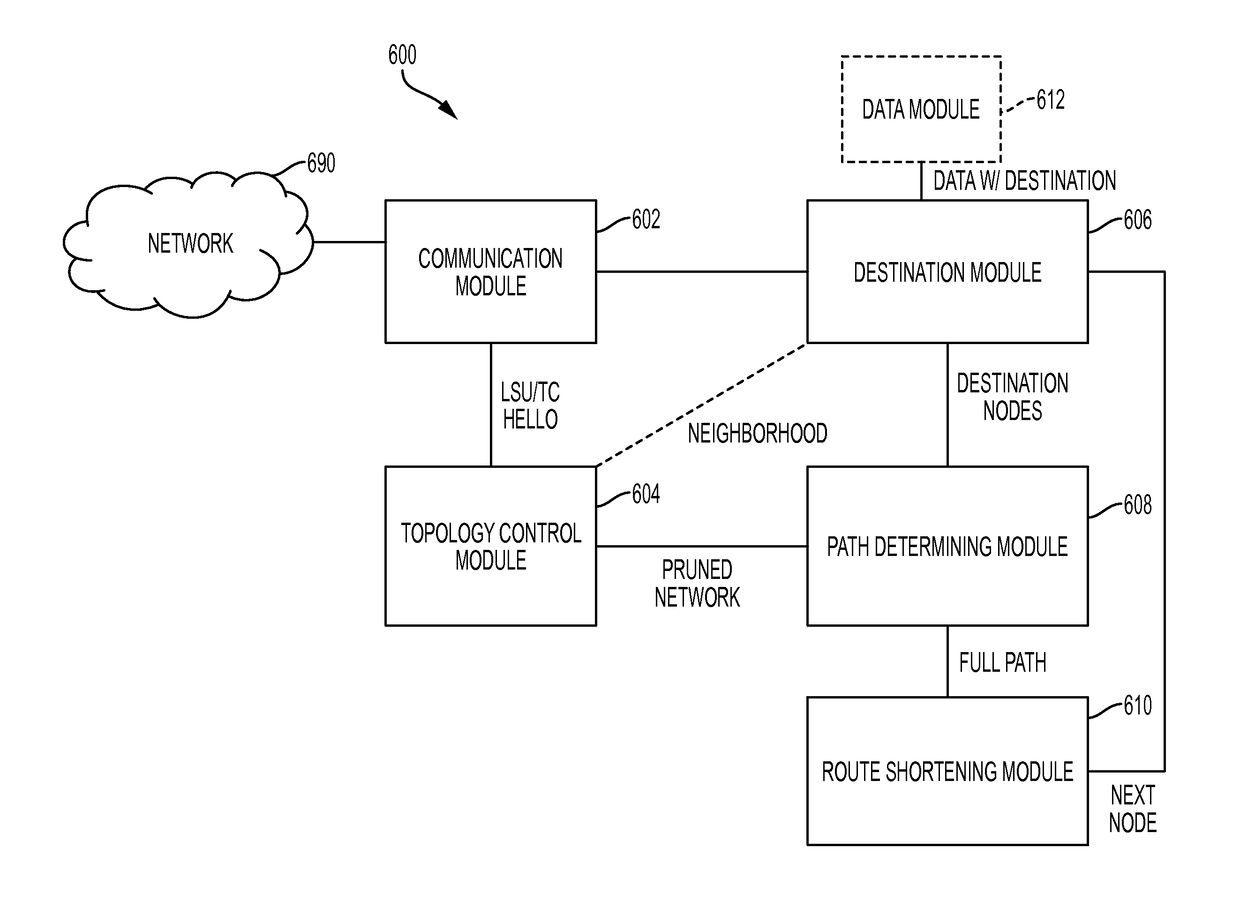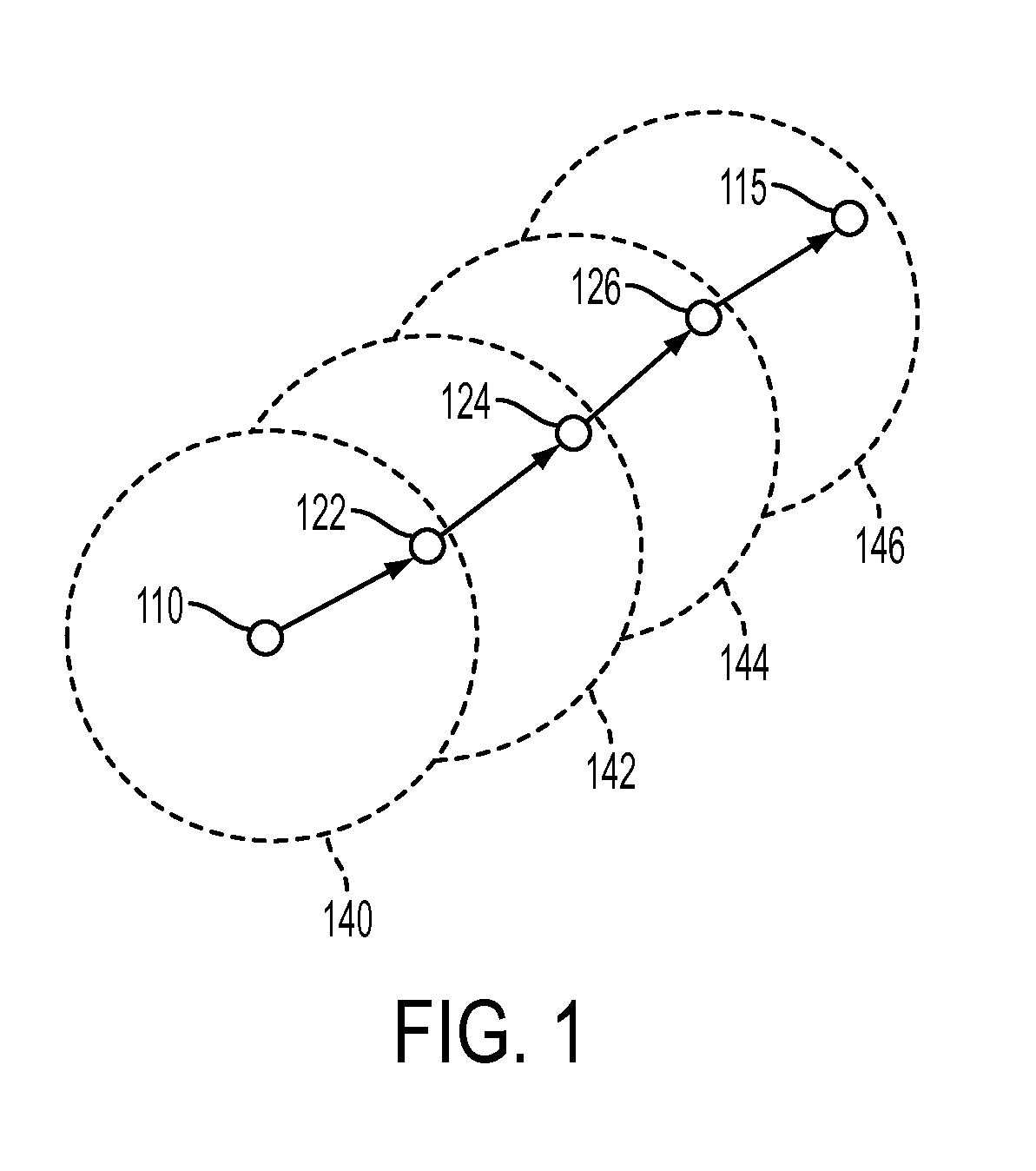Method and apparatus for shortening multi-hop routes in a wireless ad hoc network
a wireless ad hoc network and multi-hop technology, applied in the field of wireless networks, can solve the problems of increasing latency, consuming valuable bandwidth in the process, and difficulty in applying routing techniques in conventional wired or wireless networks, and achieve the effect of shortening the route, and reducing the size of routing control overhead
- Summary
- Abstract
- Description
- Claims
- Application Information
AI Technical Summary
Benefits of technology
Problems solved by technology
Method used
Image
Examples
Embodiment Construction
[0039]Described below are systems, methods, and devices for optimizing routing in MANETs. After determining a routing path for routing a data packet to a destination node in a MANET, a source node analyzes the path to determine whether one or more portions of the path can be omitted. Upon determining that a portion of the path can be omitted, i.e., that the path can be shortened, the source node routes the data packet based on the shortened path.
[0040]The ability to optimize routing paths, according to these systems, methods, and devices, enables nodes in a network to generate sub-optimal routing paths that include more nodes than necessary, which in turn, enables reduction of required network maintenance overhead. The network is not penalized by these sub-optimal routing paths because of the optimizations described herein, and the reduction of network maintenance overhead can enable a larger network (more nodes) and / or greater data traffic.
[0041]The optimizations described herein c...
PUM
 Login to View More
Login to View More Abstract
Description
Claims
Application Information
 Login to View More
Login to View More - R&D
- Intellectual Property
- Life Sciences
- Materials
- Tech Scout
- Unparalleled Data Quality
- Higher Quality Content
- 60% Fewer Hallucinations
Browse by: Latest US Patents, China's latest patents, Technical Efficacy Thesaurus, Application Domain, Technology Topic, Popular Technical Reports.
© 2025 PatSnap. All rights reserved.Legal|Privacy policy|Modern Slavery Act Transparency Statement|Sitemap|About US| Contact US: help@patsnap.com



